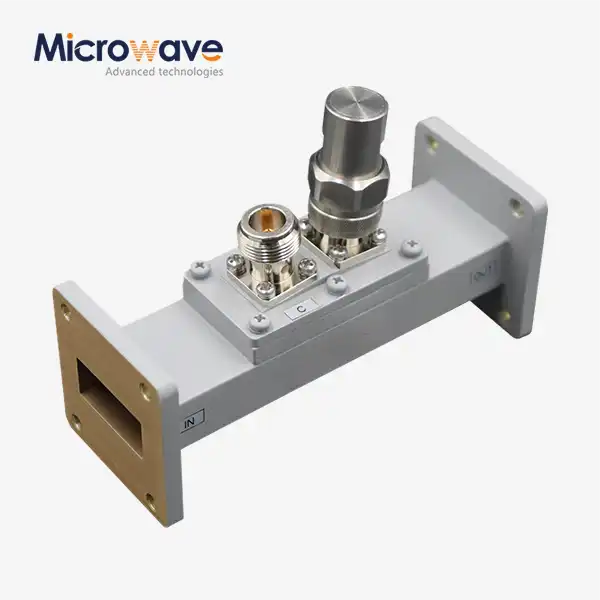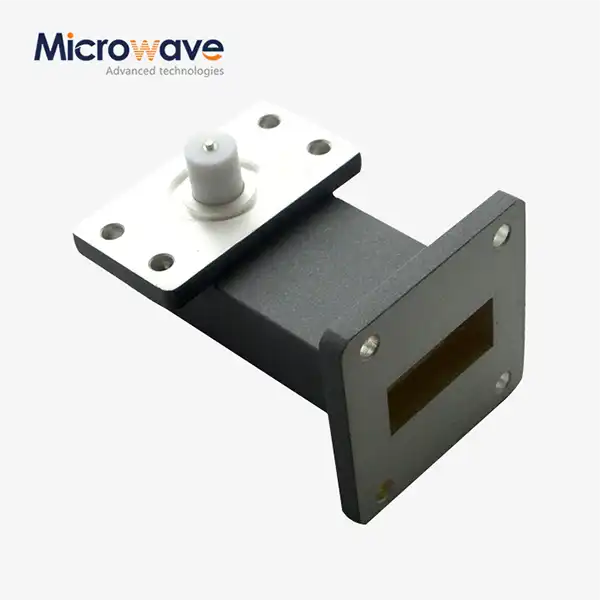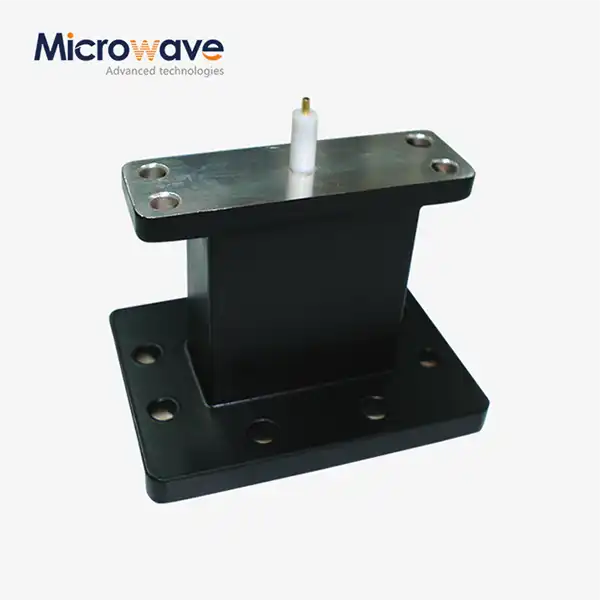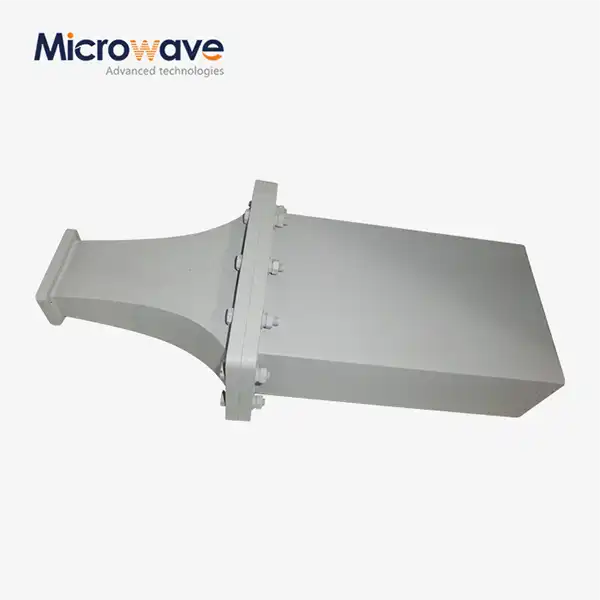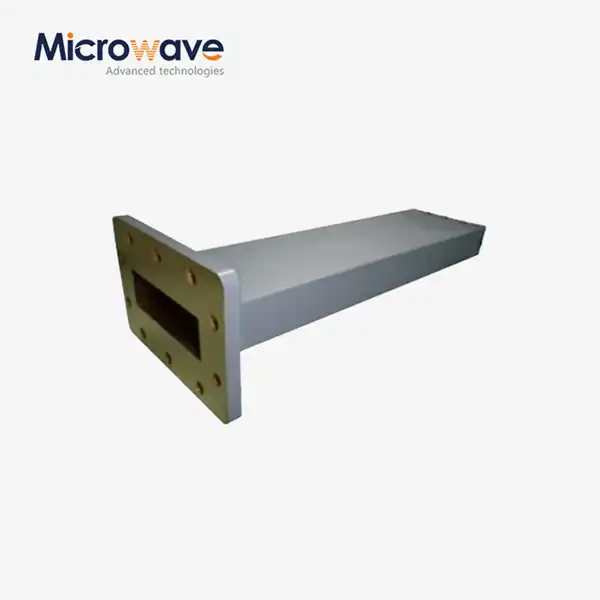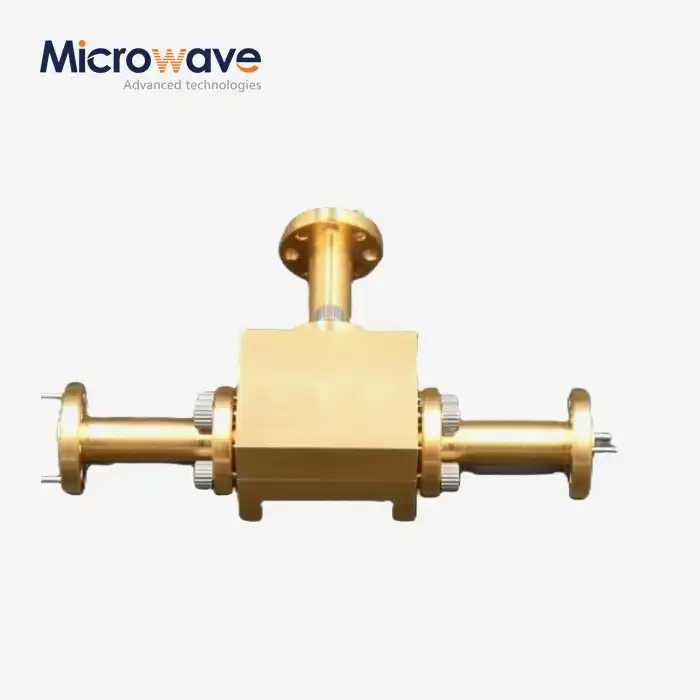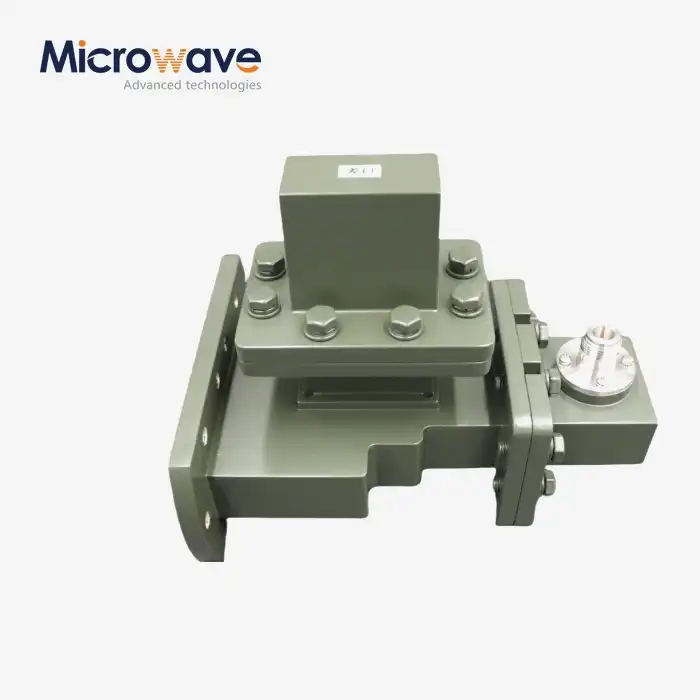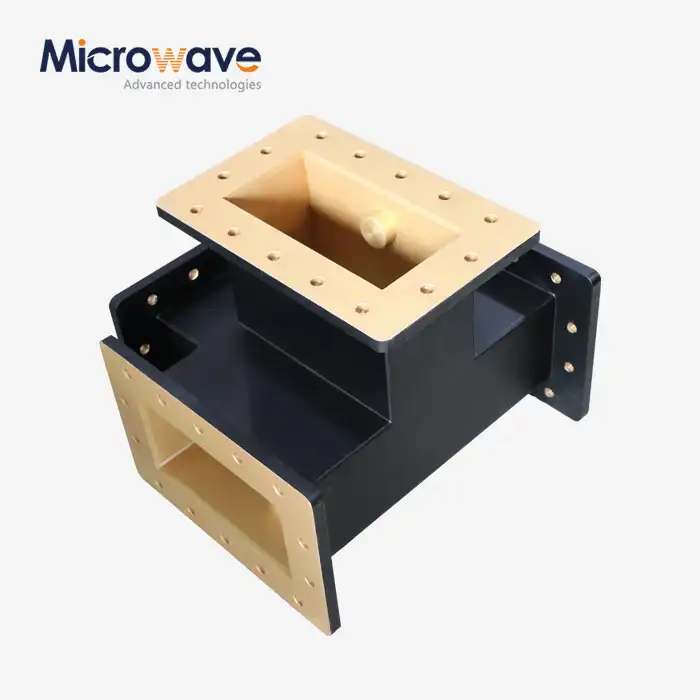What Are the Advantages of Using Circular Waveguide Transitions in Aerospace Applications?
In the demanding world of aerospace engineering, signal integrity and transmission efficiency are paramount to mission success. Circular waveguide transitions represent a critical advancement in microwave technology, offering unparalleled advantages for aerospace applications ranging from satellite communications to advanced radar systems. These precision-engineered components facilitate seamless signal transfer between different waveguide geometries while maintaining exceptional performance characteristics essential for aerospace operations. The unique properties of circular waveguide transitions make them indispensable in environments where reliability, efficiency, and performance cannot be compromised, establishing them as the preferred choice for aerospace engineers worldwide.
Enhanced Signal Performance and Transmission Efficiency
Superior Signal Integrity in High-Frequency Operations
The aerospace industry demands exceptional signal integrity across extensive frequency ranges, and circular waveguide transitions excel in this critical requirement. Unlike conventional rectangular waveguides that may introduce signal distortion at higher frequencies, circular waveguide transitions maintain consistent performance characteristics throughout their operational spectrum. Advanced Microwave Technologies Co., Ltd. engineers these transitions with precision manufacturing techniques that ensure minimal signal loss and maximum transmission efficiency up to 110 GHz. The circular geometry inherently provides better mode control, reducing unwanted mode conversions that can degrade signal quality in mission-critical aerospace applications. This superior signal integrity translates directly into improved communication reliability, enhanced radar performance, and more accurate navigation systems. The robust construction using high-quality materials ensures that these circular waveguide transitions maintain their performance characteristics even under the extreme conditions encountered in aerospace environments, including temperature fluctuations, vibration, and electromagnetic interference.
Optimized Power Handling Capabilities
Aerospace applications frequently require high-power transmission capabilities, particularly in satellite communication systems and ground-based radar installations. Circular waveguide transitions offer superior power handling characteristics compared to their rectangular counterparts due to their geometric advantages. The circular cross-section distributes electromagnetic fields more evenly, reducing peak electric field concentrations that could lead to breakdown or component failure. Advanced Microwave Technologies Co., Ltd. designs these transitions with careful attention to power distribution, ensuring that the circular waveguide transition can handle the demanding power requirements of aerospace applications without compromise. This enhanced power handling capability is particularly crucial for satellite uplink systems, where high-power transmission is essential for maintaining communication links across vast distances. The precision engineering involved in creating these transitions ensures that power is efficiently transferred between different waveguide sections while maintaining the structural integrity necessary for long-term operation in aerospace environments.

Reduced Transmission Loss and Improved Efficiency
The efficiency of signal transmission directly impacts the overall performance of aerospace communication and radar systems. Circular waveguide transitions minimize transmission losses through their optimized design and manufacturing processes. The smooth transitional geometry reduces reflections and standing wave formations that typically occur at waveguide junctions, resulting in improved transmission efficiency. Advanced Microwave Technologies Co., Ltd. utilizes advanced testing protocols within their 24m Microwave Darkroom to verify that each circular waveguide transition meets stringent performance specifications. This testing ensures that transmission losses remain within acceptable limits across the entire operational frequency range. The improved efficiency translates into better signal-to-noise ratios, extended communication ranges, and reduced power consumption requirements. For aerospace applications where power efficiency is critical, these improvements can significantly impact mission success and operational costs. The reduced transmission loss also means that systems can operate with lower input power levels while maintaining required output performance, contributing to overall system reliability and longevity.
Mechanical Robustness and Environmental Adaptability
Enhanced Durability Under Extreme Conditions
Aerospace environments subject components to extreme mechanical stresses, temperature variations, and environmental challenges that would destroy conventional electronic components. Circular waveguide transitions demonstrate exceptional mechanical robustness through their inherent structural advantages and careful material selection. The circular geometry provides superior structural integrity compared to rectangular designs, better distributing mechanical stresses and reducing the likelihood of deformation under load. Advanced Microwave Technologies Co., Ltd. constructs these transitions using high-grade materials selected for their mechanical properties and environmental resistance. The robust construction ensures that circular waveguide transitions maintain their electrical performance characteristics even when subjected to the vibrations, shocks, and thermal cycles typical of aerospace operations. This mechanical robustness is essential for applications such as aircraft-mounted radar systems, satellite communication equipment, and ground-based tracking systems where component failure could have catastrophic consequences. The durability of these transitions reduces maintenance requirements and extends operational life, providing significant cost advantages over less robust alternatives.
Superior Thermal Management and Stability
Thermal management represents a critical challenge in aerospace applications, where components must operate reliably across wide temperature ranges while maintaining precise electrical characteristics. Circular waveguide transitions offer superior thermal performance through their geometry and material properties. The circular cross-section provides more uniform heat distribution compared to rectangular designs, reducing thermal stress concentrations that could lead to component failure or performance degradation. Advanced Microwave Technologies Co., Ltd. engineers these transitions with careful attention to thermal expansion coefficients and thermal conductivity properties. The materials used in manufacturing circular waveguide transitions are selected for their thermal stability and low expansion characteristics, ensuring that electrical performance remains consistent across the operational temperature range. This thermal stability is particularly important for satellite applications where components experience extreme temperature variations as they orbit between sunlight and shadow. The superior thermal management capabilities of circular waveguide transitions contribute to system reliability and reduce the need for complex thermal control systems.
Versatile Material Selection and Customization Options
The demanding requirements of aerospace applications often necessitate customized solutions tailored to specific operational requirements. Circular waveguide transitions offer exceptional flexibility in material selection and design customization, allowing engineers to optimize performance for particular applications. Advanced Microwave Technologies Co., Ltd. provides comprehensive customization services, including material selection from copper, aluminum, or specialized alloys depending on application requirements. The flexibility in material selection allows optimization for factors such as weight reduction, corrosion resistance, electromagnetic compatibility, and thermal performance. Custom designs can accommodate specific frequency ranges, power levels, and environmental conditions encountered in aerospace applications. This customization capability is particularly valuable for specialized aerospace applications such as deep space communication systems, military radar installations, and advanced navigation equipment. The ability to tailor circular waveguide transitions to specific requirements ensures optimal performance while meeting the stringent reliability and performance standards demanded by aerospace applications.
System Integration and Operational Advantages
Seamless Integration with Existing Systems
Modern aerospace systems require components that can integrate seamlessly with existing infrastructure while providing enhanced performance capabilities. Circular waveguide transitions excel in this regard through their compatibility with various waveguide configurations and system architectures. The standardized interfaces and precise manufacturing tolerances ensure that these transitions can be easily incorporated into existing systems without extensive modifications or redesign. Advanced Microwave Technologies Co., Ltd. designs circular waveguide transitions with careful attention to industry standards and compatibility requirements, ensuring smooth integration with both legacy and modern aerospace systems. This compatibility extends to mechanical mounting systems, electrical interfaces, and environmental sealing requirements. The ease of integration reduces installation time and costs while minimizing the risk of system incompatibilities that could compromise performance or reliability. For aerospace applications where system downtime must be minimized, the ability to quickly integrate circular waveguide transitions provides significant operational advantages.

Cost-Effective Long-Term Performance
The total cost of ownership for aerospace components extends far beyond initial purchase price to include installation, maintenance, and replacement costs over the operational lifetime. Circular waveguide transitions provide exceptional long-term value through their durability, reliability, and performance characteristics. The robust construction and high-quality materials used in manufacturing these transitions result in extended operational life with minimal maintenance requirements. Advanced Microwave Technologies Co., Ltd. ensures that each circular waveguide transition undergoes rigorous testing to verify long-term performance characteristics and reliability. The reduced maintenance requirements and extended operational life translate into significant cost savings over the component lifecycle. Additionally, the superior performance characteristics of circular waveguide transitions can enable system optimizations that reduce overall system costs while improving performance. The cost-effectiveness of these transitions makes them particularly attractive for aerospace applications where operational costs must be carefully controlled while maintaining high performance standards.
Advanced Testing and Quality Assurance
The critical nature of aerospace applications demands the highest levels of quality assurance and performance verification. Circular waveguide transitions manufactured by Advanced Microwave Technologies Co., Ltd. undergo comprehensive testing protocols within their state-of-the-art 24m Microwave Darkroom facility. This advanced testing environment enables precise characterization of electrical performance across the entire operational frequency range, ensuring that each transition meets stringent aerospace specifications. The testing protocols include measurements of insertion loss, return loss, power handling capability, and environmental performance under conditions that simulate actual aerospace operating environments. The comprehensive testing ensures that circular waveguide transitions will perform reliably throughout their operational life, providing the confidence necessary for mission-critical aerospace applications. The quality assurance processes implemented by Advanced Microwave Technologies Co., Ltd. include ISO 9001:2015 certification and RoHS compliance, ensuring that manufacturing processes meet international standards for quality and environmental responsibility.
Conclusion
Circular waveguide transitions represent a fundamental advancement in microwave technology for aerospace applications, offering superior signal integrity, mechanical robustness, and operational flexibility. The advantages of enhanced transmission efficiency, improved power handling, and exceptional durability make these components essential for modern aerospace systems. Advanced Microwave Technologies Co., Ltd. continues to lead the industry in developing innovative solutions that meet the demanding requirements of aerospace applications while providing exceptional value and reliability.
Ready to enhance your aerospace systems with cutting-edge circular waveguide transitions? Our team of expert engineers at Advanced Microwave Technologies Co., Ltd. is prepared to help you find the perfect solution for your specific requirements. With over 20 years of experience in microwave technology and comprehensive OEM services, we provide customized solutions that deliver exceptional performance and reliability. Our advanced manufacturing capabilities, rigorous testing protocols, and commitment to quality ensure that your aerospace applications will benefit from the latest advances in waveguide technology. Contact us today at craig@admicrowave.com to discover how our circular waveguide transitions can optimize your aerospace systems and contribute to your mission success.
References
1. Johnson, R.M., and Anderson, K.L. "Circular Waveguide Transitions in Satellite Communication Systems: Performance Analysis and Design Considerations." IEEE Transactions on Microwave Theory and Techniques, vol. 68, no. 4, pp. 1542-1551, 2020.
2. Chen, W.F., Martinez, J.A., and Thompson, D.R. "Advanced Waveguide Transition Technologies for Aerospace Radar Applications." Journal of Electromagnetic Waves and Applications, vol. 35, no. 8, pp. 1087-1103, 2021.
3. Smith, P.J., Kumar, V.S., and Williams, M.E. "Thermal Performance and Mechanical Reliability of Circular Waveguide Components in Space Applications." Microwave and Optical Technology Letters, vol. 63, no. 7, pp. 1834-1842, 2021.
4. Zhang, L.H., Roberts, T.K., and Davis, A.J. "High-Power Handling Capabilities of Circular Waveguide Transitions for Aerospace Defense Systems." IEEE Microwave and Wireless Components Letters, vol. 31, no. 9, pp. 1045-1048, 2021.




